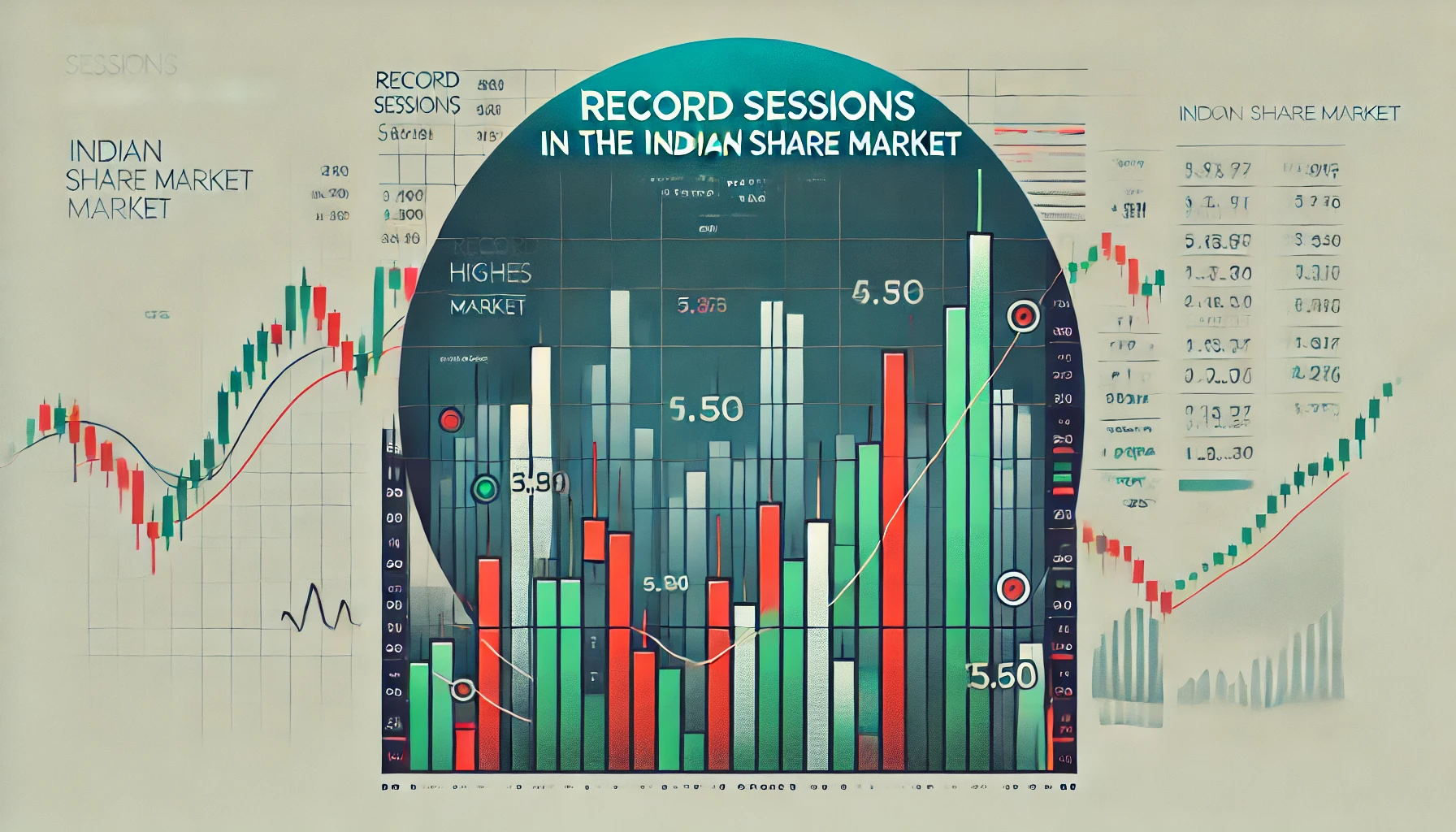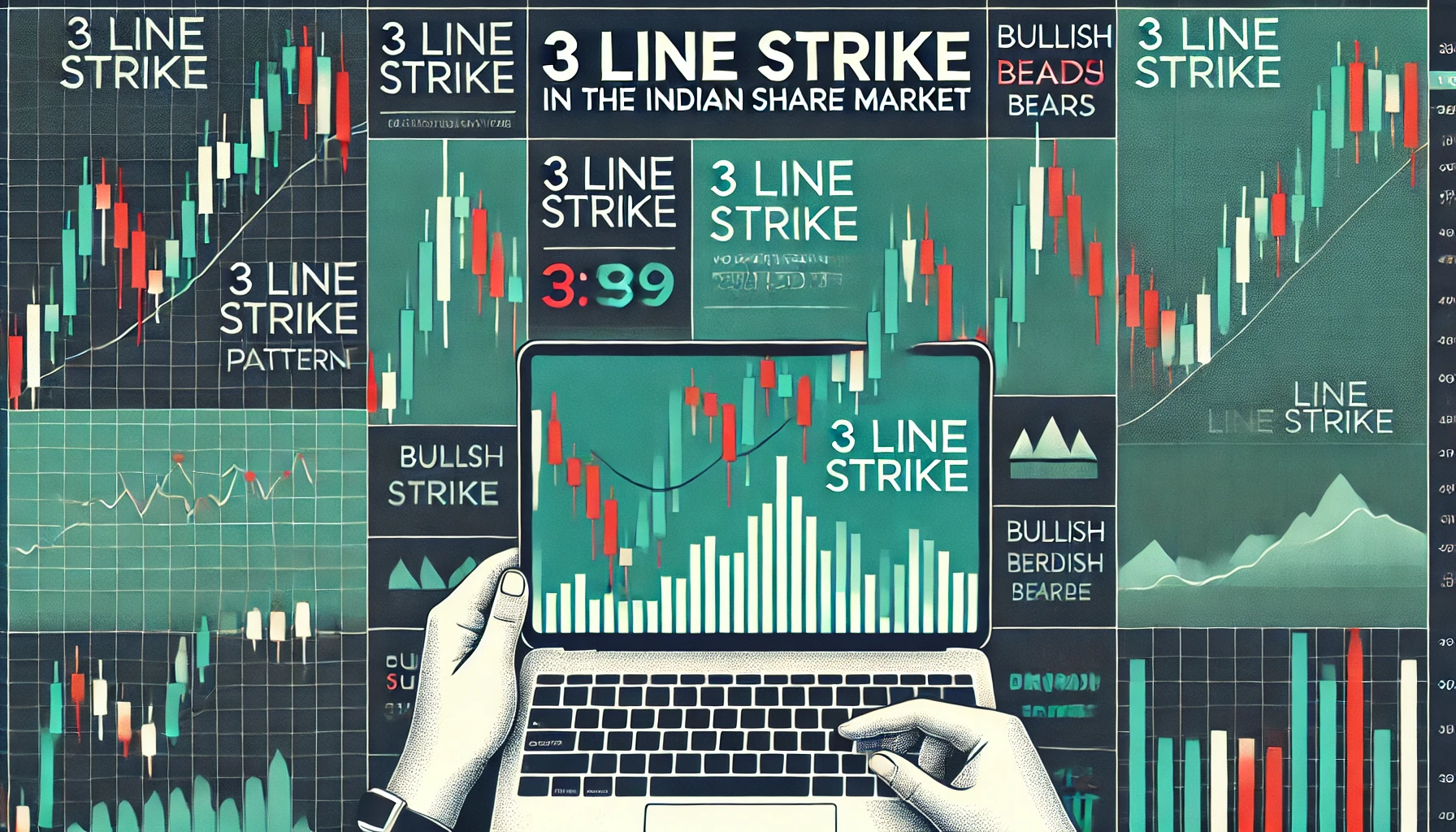The Indian share market is filled with patterns that can help traders make informed decisions. Among these, the Last Engulfing candlestick pattern stands out for its unique ability to signal potential market reversals. Recognizing this pattern allows traders to anticipate shifts in market trends, giving them a competitive edge. In this blog, we will break down the Last Engulfing pattern, its types, how it can be used in trading, and review historical data to illustrate its effectiveness in the Indian share market.
What is the Last Engulfing Candlestick Pattern?
The Last Engulfing pattern is a two-candle reversal pattern, with the second candle fully engulfing the first. It indicates a potential market reversal, although its exact implication depends on whether it appears in an uptrend or downtrend.
- Bullish Last Engulfing Pattern: Appears in a downtrend, where the first candle is bearish (red), and the second candle is a bullish (green) candle that engulfs the first. Despite the bullishness of the second candle, it suggests the continuation of the downtrend before a possible reversal.
- Bearish Last Engulfing Pattern: Appears in an uptrend, where the first candle is bullish (green), and the second candle is bearish (red) and engulfs the first. Despite the bearishness of the second candle, it indicates that the uptrend may continue for a short period before reversing.
| Candlestick Characteristics | Bullish Last Engulfing | Bearish Last Engulfing |
|---|---|---|
| First Candle is Small | Bearish (Red) | Bullish (Green) |
| Second Candle Engulfs First | Bullish (Green) | Bearish (Red) |
| Market Sentiment | Downtrend Reversal | Uptrend Reversal |
Interpretation of Last Engulfing in the Indian Share Market
The Last Engulfing pattern is a reliable signal of potential reversals in the Indian stock market. It indicates indecision between buyers and sellers, leading to a period of consolidation followed by a potential reversal. However, the continuation of the existing trend is often observed before the reversal occurs.
- Bullish Last Engulfing in a Downtrend: The pattern shows that although the bullish candle dominates, the downtrend is likely to persist for a short period before a reversal. Traders can prepare to enter long positions once the reversal is confirmed.
- Bearish Last Engulfing in an Uptrend: In an uptrend, the pattern signifies that sellers are beginning to take control. However, the uptrend may continue for a few sessions before the market reverses, providing opportunities to exit or initiate short trades.
Historical Data of Last Engulfing in the Indian Share Market
To better understand how the Last Engulfing pattern works, let’s look at some real-life examples from the Indian share market.
- Reliance Industries (2020): In June 2020, a Bullish Last Engulfing pattern appeared after a long downtrend. The pattern correctly predicted the continuation of the downtrend for a short period, followed by a strong reversal that led to a 12% rise in the stock over the next month.
- Tata Motors (2021): In April 2021, Tata Motors displayed a Bearish Last Engulfing pattern after a strong uptrend. The pattern predicted a continuation of the uptrend for two more sessions before a 7% drop occurred.
| Stock/Index | Date | Last Engulfing Type | Resulting Trend |
|---|---|---|---|
| Reliance Industries | June 2020 | Bullish Last Engulfing | Downtrend followed by 12% uptrend |
| Tata Motors | April 2021 | Bearish Last Engulfing | Uptrend followed by 7% drop |
How to Trade Using the Last Engulfing Pattern in the Indian Share Market
The Last Engulfing pattern offers valuable insights, but traders should use additional technical indicators to confirm the pattern’s effectiveness.
- Last Engulfing with Moving Averages: Traders can combine the Last Engulfing pattern with moving averages (such as the 50-day and 200-day moving averages) to strengthen their analysis. If a Last Engulfing pattern forms near a key moving average, it can provide more confidence in the reversal.
- Last Engulfing with RSI: When combined with the Relative Strength Index (RSI), the Last Engulfing pattern becomes more effective. If the RSI is showing an oversold condition alongside a Bullish Last Engulfing pattern, it is a stronger signal for a potential reversal.
- Last Engulfing with Volume Analysis: Volume plays a critical role in validating the Last Engulfing pattern. If the pattern is accompanied by high volume, it suggests that the market participants are strongly supporting the trend, increasing the likelihood of a reversal.
Limitations of the Last Engulfing Pattern
While the Last Engulfing pattern is a useful tool for identifying potential reversals, it is not foolproof. Traders must be aware of its limitations:
- False Signals: The pattern can produce false signals, particularly in volatile or choppy markets. It is essential to use other technical tools, such as moving averages or trendlines, to confirm the signal.
- Continuation Risk: Despite being a reversal pattern, the Last Engulfing does not always indicate an immediate reversal. The existing trend may continue for a few more sessions before the reversal takes place.
Case Study: Last Engulfing and Nifty 50
In March 2021, the Nifty 50 index showed a Bearish Last Engulfing pattern after an extended uptrend. The pattern correctly indicated the continuation of the uptrend for a short period before the market reversed, dropping by 5% in the following weeks. Traders who identified the Last Engulfing pattern and combined it with volume and RSI were able to avoid losses and capitalize on the trend reversal.
| Date | Index | Last Engulfing Type | Post-Pattern Movement |
|---|---|---|---|
| March 2021 | Nifty 50 | Bearish Last Engulfing | Short uptrend followed by 5% drop |
How to Incorporate the Last Engulfing Pattern in Trading Strategies
The Last Engulfing pattern can be effectively incorporated into various trading strategies:
- Wait for Confirmation: Always wait for confirmation from the next few candles before entering a trade based on the Last Engulfing pattern. This reduces the chances of entering a trade prematurely.
- Set Stop-Loss Orders: To manage risk, traders should set stop-loss orders just below the bullish candle in a Bullish Last Engulfing or above the bearish candle in a Bearish Last Engulfing.
- Combine with Other Indicators: The Last Engulfing pattern is most reliable when used alongside other indicators such as RSI, Bollinger Bands, and Moving Averages. These tools help confirm the reversal and avoid false signals.
Conclusion:
The Last Engulfing candlestick pattern is a powerful indicator in the Indian share market that signals potential trend reversals. By understanding its characteristics and historical performance, traders can use this pattern to make more informed decisions. However, like all candlestick patterns, the Last Engulfing is most effective when combined with other technical analysis tools to confirm the reversal.
Traders who effectively incorporate the Last Engulfing pattern into their strategies can capitalize on market movements, mitigate risks, and improve their trading outcomes.

What is the TRIN stock market indicator?
The TRIN (Trading Index), also referred to as the Arms Index, is a technical analysis …

Record Sessions
The Indian share market is a dynamic and volatile space where major highs and lows …

3 Line Strike
Candlestick patterns are a vital tool for traders in the stock market, offering insights into …

3 White Soldiers and 3 Black Crows
Candlestick patterns are a key element of technical analysis in stock trading, offering clear signals …

Gapping Doji
Candlestick patterns are a critical part of technical analysis in the stock market, providing traders …

3 Windows
Candlestick patterns are a vital part of technical analysis, offering traders and investors insights into …

2 Gapping Candles
In the fast-paced world of the Indian stock market, technical analysis plays a crucial role …

3 Inside Down and Up
Candlestick patterns are powerful tools in the world of technical analysis, offering traders insight into …

Bullish and Bearish Belt Hold
Technical analysis is an essential part of trading in the Indian share market. Candlestick patterns, …

Piercing and Dark Cloud Cover
In the ever-evolving Indian stock market, candlestick patterns are crucial for traders aiming to predict …

Double Doji
Candlestick patterns have long been a favored tool for technical traders to forecast market movements. …

Rising and Falling Windows
In the world of technical analysis, candlestick patterns are vital tools for traders to anticipate …

Tweezer Top and Bottom
In the fast-paced world of the Indian share market, traders use technical analysis tools to …

Morning Star and Evening Star
In the Indian share market, technical analysis is a valuable tool for traders aiming to …

Hammer and Hanging Man
The Indian stock market offers a wealth of opportunities for traders who understand technical analysis. …

Shooting Star and Inverted Hammer
The Indian stock market, with its dynamic nature, presents various opportunities for traders and investors. …

Last Engulfing
The Indian share market is filled with patterns that can help traders make informed decisions. …

Harami
In the world of stock market analysis, candlestick patterns offer valuable insights into price movements. …

Engulfing
The Indian share market is known for its volatility, and traders often rely on technical …

Marubozu
Candlestick patterns are powerful tools used by traders in the Indian share market to analyze …

Spinning Top
The Indian share market, like any other, experiences constant fluctuations due to a multitude of …

Doji
The Indian share market is dynamic, with investors using various tools to gauge stock performance. …

Double Top
In the world of technical analysis, chart patterns are valuable tools that help traders spot …

Tweezer
In the Indian share market, where volatility and price fluctuations are part of daily trading, …

Harami
In the world of technical analysis, candlestick patterns are powerful tools that help traders make …

Heiken-Ashi
Navigating the Indian share market can be challenging due to the inherent volatility and market …

Ichimoku
In the world of technical analysis, few indicators offer the comprehensive insights that the Ichimoku …

Value Charts
In the ever-changing landscape of the Indian share market, traders and investors need tools that …

Money Flow Index
In the Indian share market, identifying trends, understanding momentum, and assessing volume are critical components …

Aroon
In the fast-paced world of the Indian share market, identifying market trends and spotting reversals …

Gator Indicator
In the Indian share market, success is largely dependent on identifying the right trends and …

Adaptive Moving Average
In the dynamic and often volatile Indian share market, traders and investors continuously seek tools …

Coppock Curve
In the ever-evolving landscape of the Indian share market, traders and investors rely on technical …

Premier Stochastic Oscillator
In the fast-paced world of the Indian share market, technical indicators are indispensable tools that …

Dynamic RSI
The Indian share market is known for its volatility, with frequent shifts in trends influenced …

Vortex
The Indian share market offers plenty of opportunities for traders and investors to capitalize on …

Glitch Index
The Indian share market, like all financial markets, is prone to moments of irregular behavior—unexpected …

Triple Exponential Average
Navigating the Indian share market requires traders to use effective tools that help them track …

Know Sure Thing
The Indian share market presents countless opportunities for traders and investors, but making accurate decisions …

Mass Index
The Indian share market is volatile, with price trends constantly shifting due to numerous factors. …


















